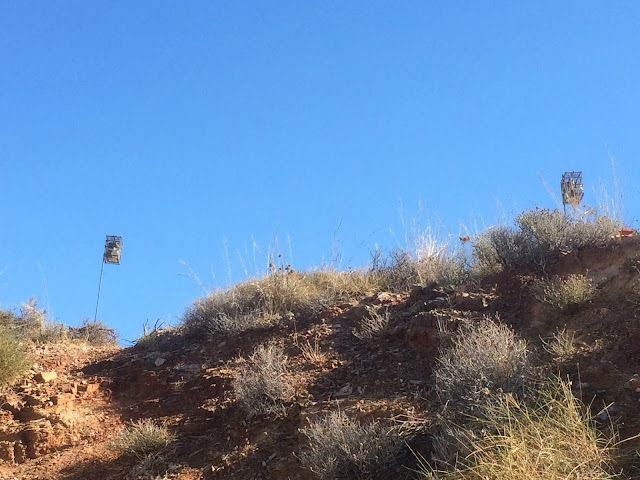It was a beautiful clear, calm, warm and sunny start as we set of with our friend, Marieke for a couple of days in Tarifa. Not far beyond Marbella there was the first hint of a breeze and by the time we reached the coast at Algeciras there was a stiff wind blowing. We had been warned that there were strong winds blowing for the week-end and as a result our field meeting to the Isla de las Palomas at Tarifa had already been cancelled. More later.
Crossing from Algeciras to Tarifa we had a kettle of at least 50 Griffon Vultures fighting against the elements and then it was on to Barbate for lunch. Then it was straight to the track to take us round behind the inlet where we found the tide full in and virtually no mud either. Spotless Starlings and Crested Larks on the field along with a handful of Bald Ibis. Over the water the occasional Cormorant and, seen from the car, Goldfinches and the first of many Meadow Pipits. Very distant Flamingo and a couple of Spoonbill plus a small number of Sanderling.
 |
| Meadow Pipit Bisbita Pratense Anthus pratensis completing its ablutions in a large puddle on the track |
 |
| And then a second Meadow Pipit came to see what all the fuss was about |
Not an awful lot you can do during the evening at a hostal (El Levante on this occasion) so we took our time returning to Tarifa by travelling west to east through La Janda, and well worth it it was. Most of the birds were a the western end and we were soon encountering hundreds of White Storks along with mixed gulls, a distant Black-shouldered Kite and a rather magnificent, and near, Black Stork. The road side grasses produced House Sparrow, Serin and Goldfinch and we discovered good numbers of Lapwing on the recently harvested, now flooded, rice fields.
 |
| Great White Egret Garceta Grande Egretta alba |
Considering the windy weather, even if it was mainly warm and sunny, a very enjoyable day.
Birds seen:
Cormorant, Cattle Egret, Little Egret, Bald Ibis, Great White Egret, Heron, White Stork, Black Stork, Spoonbill, Flamingo, Griffon Vulture, Black-winged Kite, Booted Eagle, Marsh Harrier, Hen Harrier, Moorhen, Crane, Black-winged Stilt, Stone Curlew, Ringed Plover, Kentish Plover, Lapwing, Sanderling, Whimbrel, Redshank, Greenshank, Green Sandpiper, Black-headed Gull, Yellow-legged Gull, Crested Lark, Barn Swallow, Meadow Pipit, Yellow Wagtail, Robin, Black Redstart, Whinchat, Stonechat, Northern Wheatear, Chiffchaff, Jackdaw, Common Starling, Spotless Starling, House Sparrow, Spanish Sparrow, Serin, Goldfinch, Corn Bunting.
Check out the accompanying website at http://www.birdingaxarquia.weebly.com for the latest sightings, photographs and additional information.















































